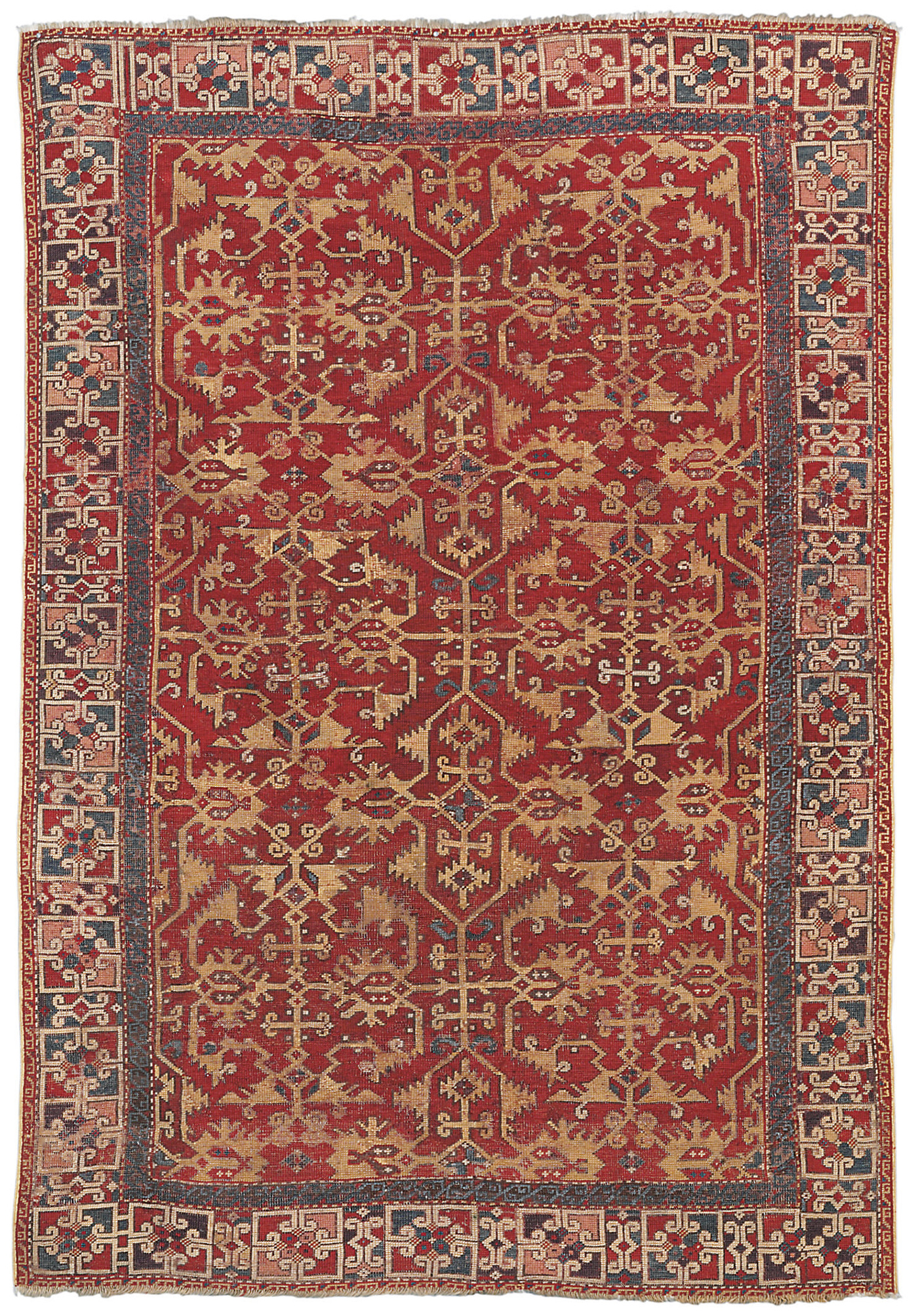|
Christie's SALE 7616
Oriental Rugs and Carpets
London|10 October
2008 Browse Sale
LOT 35
A ''LOTTO'' RUG
PROBABLY USHAK, WEST ANATOLIA, 16TH CENTURY
Price realised GBP 22,500
Estimate GBP 20,000 - GBP 25,000
Areas of repiling, reweaves and restorations, corroded brown, selvages
replaced, ends secured
5ft.4in. x 3ft.8in. (163cm. x 112cm.)
Provenance
Commander Ludovico Pogliaghi, Varese, by 1920 Given by
the Poliaghi commune as a hereditary gift to the Roman Catholic church,
the Vatican city, Rome, Italy, 1940
The Wher Collection, Lugano,
Switzerland, as an act of compravendita with the Vatican, 1950
The
Georges Valery Collection, Geneva, Switzerland, 1960
Purchased in 1980
by a private Italian collector, to the present day
Lot Essay
The field pattern of this example, using Ellis'
classifications, is of the "kilim" style because of its angular drawing
and the jagged, saw-tooth edges seen in ares of the arabesque lattice, (C.
G. Ellis, "The 'Lotto' Pattern as a Fashion in Carpets," Festschrift fr
Peter Wilhelm Meister, 1975, pp.19-31).
The 'box' border seen here
is usually associated with early 'Lotto' rugs from the sixteenth century.
Although in most other examples the kufesque border is more visually
related to script, the 'box' border is found in a small number of other
'Lotto' rugs, and occasional other Turkish rugs of the same period. This
border only appears on two paintings, one dateable to the mid-16th
century, the other to circa 1590 (John Mills, "Carpets in Paintings, The
'Bellini', 'Keyhole' or 'Re-entrant' Rugs", Hali 58, August 1991,
appendix, p.127; for an illustration of the second of these two, 'The
Chess Players', by Ludovico Carracci see John Mills,"'Lotto' Carpets in
Western Paintings," Hali, Vol. 3, no. 4, pp.278-289, fig. 20). A small
number of other 'Lotto' rugs or fragments are known with this border
(Serare Yetkin, Historical Turkish Carpets, Istanbul, 1981, pl.32, 'kilim'
field in the Turk ve Islam Museum, Istanbul; Volkmar Gantzhorn, The
Christian Oriental Carpet, Cologne, 1991, illus. 398, 'Anatolian field';
Michael Franses and Robert Pinner, "Turkish Carpets in the Victoria &
Albert Museum," Hali, Vol. 6, no. 4, p.364, fig. 9, a fragment with
'Anatolian' field, The Bernheimer Family Collection of Carpets,
Christie's, London, 14 February 1996, lot, 90, with 'kilim' field; Trefoil
Guls Stars and Gardens, exhibition catalogue, Oakland California, 1989,
pl.XVI, p.11 with 'Anatolian' field), Christie's London, 16 April 2007,
lot 47, 'ornamental' field. Two further examples whose "box" borders lack
the secondary elements are in churches in Transylvania (Stefano Ionescu
(ed.), Antique Ottoman Rugs in Transylvania, Rome, 2005, cat.232, p.187,
with variant 'Anatolian' field, and another substantially restored
fragment with 'Anatolian' field, ill.p.204).
The combination of
the kilim-style field and the kufesque border of the present piece is
unusual and can be found in another example in the Museé Jacquemart-André,
Paris, albeit with a different interpretation of the kufesque border (see
Tapis Present de L'Orient A L'Occident, Paris, 1989, pp.66-67).

 |


